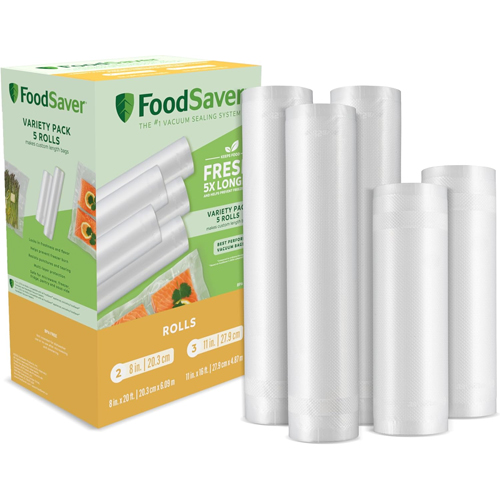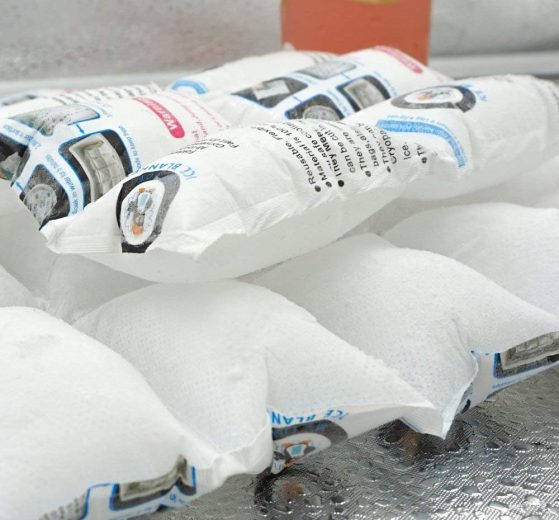We broke down the process for maximum efficiency and minimum hassle.
If you’ve ever traveled for Yom Tov and prepared your own food, you know that it’s a big job. Huge, actually. And if you’re hosting at your destination, it can feel impossible.
Last year, we changed our Yom Tov plans very late in the game and decided to go to Israel for the first half of Sukkos. And we’d be arriving erev Yom Tov. Meaning, there wouldn’t be much time to shop and cook. Also, with a daughter and a son with lots of seminary and yeshiva friends, we’d be hosting pretty much every meal. Did we mention that we have lots of family there who would be joining us in our very large sukkah?
The Yom Tov cooking and packing operation became serious business! Let’s start by saying you can freeze almost anything. The only things I planned to prepare fresh on erev Yom Tov were: salmon, baked potatoes, roasted vegetables and chicken soup. (Chicken soup can definitely be frozen and transported, but I would need so much, and it’s so easy to prepare, that it wasn’t worth preparing in advance.)

There are two reasons you want to vacuum seal everything. The first is for freshness. Food that is vacuum sealed will last longer in the freezer and in the fridge, too. And the second reason is to save space. Vacuum sealing eliminates any excess air that would be trapped in a container.

So let’s talk about how to pack everything. The goal is to get everything as flat as possible. This means no round containers.
Liquids. Anything liquid – soups, sauces, compotes – should be frozen in square/rectangular containers or flat in ziploc bags. These will then be vacuum sealed in a bag after they are frozen solid. Just pop the cube out of the container and put it into a vacuum seal bag. This means you can reuse the containers for different soups, so you don’t need too many.

Meats. Roasts should be cooled and then sliced.

Chicken. You can vacuum seal chicken (cutlets or on-the-bone) marinated raw or fully cooked. (When there’s a lot of liquid in the bag, it can get messy. Try holding the bag with a fold above the food when inserting it into the machine to prevent the liquid from being suctioned up.)
Grains/Sides. Rice, pasta, quinoa – these can all be vacuum sealed when fully cooked, and then frozen. They will look and taste fresh once defrosted.
Desserts/Doughs. I prepared galette dough and vacuum sealed them in rounds. Then they can be defrosted, rolled out (use a soda bottle) and filled with fresh fruit. You can do the same with all sorts of crumb toppings.
Kugels. Kugels or other “mushy” foods should be frozen first and then vacuum sealed.

If you are packing for a Yom Tov that’s split into two parts, separate and mark clearly which items are for which part of Yom Tov. Consider packing in separate suitcases/coolers.
By the time you are ready to pack your suitcases or boxes, you will have mostly square and flat packages like building blocks. These can be packed together very tightly which will help them stay frozen. These ice pack blankets can be placed around and/or on top of the food. We chose to carry on all our cooked food. I figured clothing could be replaced if a suitcase went missing, but not all that hard work! You’d be surprised at how much you can fit in a wheeled carry-on suitcase!
When you arrive, there’s a good chance you won’t have as much freezer space as you had at home. The good thing is that your vacuum sealed food will last much longer in the fridge, so not everything has to be frozen. Plan what you will need for the later part of your stay and only freeze those packages. The rest will be fine unopened in the fridge.

Bonus: The following are things I find useful to take along from home when traveling (some are specific for travel to Israel): A good knife, disposable cutting boards, Ziploc bags, sponges, brown sugar (it’s not the same in Israel), 9x13s if you have room (good ones are very pricy in Israel and they can be very hard to find) Non-kitchen items: dryer sheets, mesh bags for laundry if you use them regularly, Sharpie (always seems to come in handy)
Make sure to check out this post about MoovIt if you will be using public transportation.
Read our other post on vacuum sealing some chicken or jerky for meals on the go or at Yeshiva.











Can you post your menu ideas of what you made that froze well?
And was the marinaded chicken TSA approved?
they actually opened the suitcases, looked through the stuff, probably saw the warning look in my eyes, and just closed it back up.
You can freeze just about anything. This isn’t the time for dainty, pretty things. I had meats, pastas, rice, soups, crumbs and ready doughs, compote, coulis, kugels, etc.
I did not take: challah, cake, dips, potato sides, fish. We bought or made those there, along with fresh salads and roasted vegetables.
Hi,
Thank you so much for this post. Can you explain how you packed the food? In a cooler or just surrounded by those ice blankets.
Very tightly packed into carry-on suitcases with the ice packs underneath and over the layer of food.
FYI Special Market has Domino brown sugar 😉 no need to schlep anymore!
yay!! that’s great to know for next time!
How would you package potato kugels?
I make all types of kugels in a parchment lined pan. Then freeze. When frozen, pop out of the pan, fold the paper around the kugel and slide into a bag, Then vacuum seal.
Does the tsa allow to take frozen liquids as carry on?
Great information! What kind of bag did you pack all the food in? Did it stay frozen the entire trip? Is the vacuum seep what keeps it frozen? I like to freeze in aluminum foil and parchment paper so I can just pop it in the oven. Can I vacuum seal over foil?
Thank you!
In America we also use brand names to call a product. For example. Kleenex for tissue. White out for correction fluid. Etc